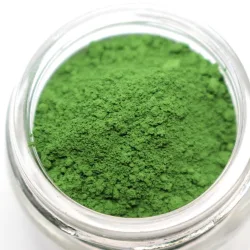The Versatility of Oxide Pigments in Industrial and Artistic Applications
2024-09-21
Oxide pigments have been used for centuries across various industries and art forms due to their stability, durability, and vibrant colors. From ancient cave paintings to modern architectural masterpieces, oxide pigments have proven to be an indispensable component in colorizing materials and surfaces. In this blog post, we’ll explore the versatility of oxide pigments and how they are used in both industrial and artistic applications.
1. What Are Oxide Pigments?
Oxide pigments are inorganic compounds derived from natural minerals or synthesized through chemical processes. The most common types include iron oxides, titanium dioxide, chromium oxide, and cobalt oxide. These pigments are known for their excellent lightfastness, meaning they resist fading when exposed to sunlight or other environmental factors.
Because of their non-toxic, environmentally friendly nature, oxide pigments are widely used in various sectors, including construction, cosmetics, and fine arts.
2. Applications in Construction and Architecture
Oxide pigments play a crucial role in the construction industry, particularly in coloring concrete, mortar, and other building materials. Their vibrant colors, which range from earthy reds and yellows to deep blues and greens, can enhance the aesthetic appeal of buildings and structures. They also improve the durability of materials as they are UV-resistant and chemically stable, ensuring that the colors stay vibrant for many years without degrading.
Concrete pavers, tiles, and architectural facades are often colored using oxide pigments to create distinctive designs. Because these pigments are insoluble in water and resistant to weathering, they are ideal for outdoor applications where exposure to the elements is constant.
3. Uses in Paint and Coatings
Oxide pigments are also commonly used in the manufacturing of paints and coatings. Their opacity and stability make them excellent for providing rich, durable color in both interior and exterior paints. Iron oxide pigments, for example, are known for their rust-colored reds and earthy tones, making them popular in industrial coatings and outdoor paints that require long-lasting performance.
Additionally, titanium dioxide (an oxide pigment) is widely used as a white pigment in paints, providing excellent coverage and brightness. Its high refractive index ensures a bright, opaque finish, making it an essential ingredient in many paint formulations.
4. Role in Cosmetics
In the cosmetic industry, oxide pigments are used to create a wide range of color products, from foundations and blushes to eyeshadows and lipsticks. Because they are non-toxic, gentle on the skin, and chemically inert, they are considered safe for use in makeup and personal care products.
Oxide pigments provide long-lasting color that resists smudging or fading, making them a preferred choice for cosmetic formulations. Iron oxides, for instance, are used to create natural-looking shades of red, brown, and yellow, allowing for a diverse range of makeup products that cater to various skin tones.
5. Oxide Pigments in Art
Artists have long favored oxide pigments for their richness in color and historical significance. From traditional frescoes to modern abstract art, oxide pigments continue to be used to create stunning visual effects. The pigments are commonly found in oil paints, acrylics, watercolors, and pastels, providing artists with a versatile medium to express their creativity.
One of the most famous examples of oxide pigment use is the red ochre found in prehistoric cave paintings, demonstrating how humans have used these natural pigments to convey their stories for millennia.
6. Environmental Benefits
Oxide pigments are not only effective but also environmentally friendly. Since they are derived from natural minerals, they have a low environmental impact compared to synthetic organic pigments. Many oxide pigments are made from recycled materials or industrial byproducts, contributing to a more sustainable production process.
Additionally, their durability and resistance to degradation mean that products colored with oxide pigments require less maintenance and replacement, reducing waste over time.
Conclusion
Oxide pigments offer unmatched versatility, durability, and vibrancy across a range of applications, from construction materials and industrial coatings to cosmetics and fine arts. Their long history of use and continued relevance today highlight their enduring value in both creative and practical pursuits. Whether you’re an artist seeking rich, natural colors or a manufacturer aiming for durable, long-lasting products, oxide pigments provide a reliable and eco-friendly solution.



